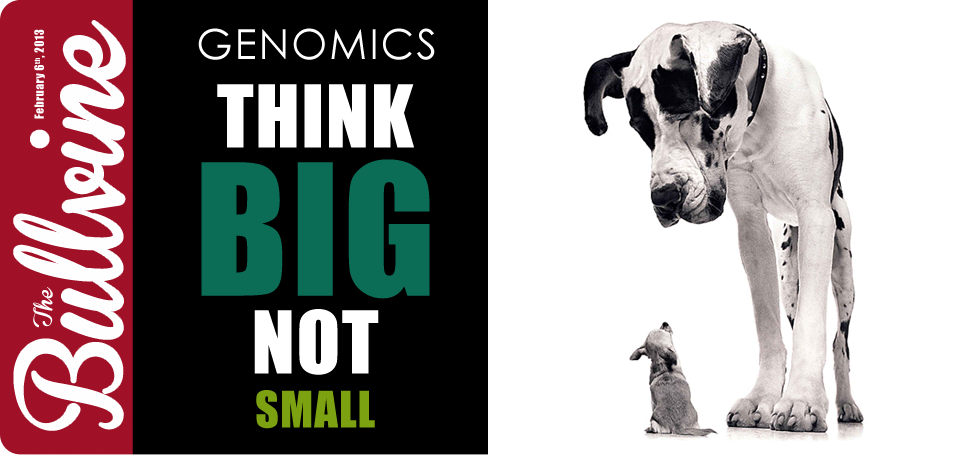Even though we are still in the early stages of genomic indexes, certain trends are already apparent. One issue that I have noticed is that too many breeders are using genomics to narrow down their sire usage to a few sires at the very top instead of using genomics to discover what sires not to use. Everyone likes to look at the top of the list to see what sires hold their rankings, however, the real power of genomics is actually in pointing out what sires not to use.
While there is no question that genomics has changed the way we look at indexes, there is one major issue that we are all guilty of. We focus only on those sires that are in the top 10 or so to make our sire selection decisions.
So let’s take a look at the current top 10 genomic sires and their TPI Scores:
- Supersire 2530
- Jabir 2515
- Numero Uno 2497
- Jacey 2493
- Predestine 2491
- Chevrolet 2490
- Hunger 2488
- Jetset 2484
- Balisto 2483
- Willpower 2476
You will notice that all these sires are within 54 TPI points of each other. That is a difference of less than 2%. The issue with this is that, according to CDN research, 95% of the time sires can vary by up to 20%, when comparing their genomic index to their eventual daughter proven evaluations (Read more: The truth about genomic indexes – “Show Me” They Work!). Applying that to the current list of sires and instead of looking at the top 10 sires you would instead need to look at all sires within 20% of the top sire, Supersire. Since Supersire is +2530 gPA TPI that means your short list would include all sires over 2000 TPI. Instead of 10 sires this means looking at the 1000 current sires.
Furthermore, genomics is not as much about identifying the top few sires you should be using, as it is about identifying the sires you should not be using. When you are looking at two full brothers and trying to decide which one to use or sample, if they are greater than 500 gTPI points apart you are better to use/sample the higher one. Or, if you can only afford to sample one of them then genomics would be a strong indicator of which one to sample. However, when they are much closer, genomics alone cannot make this decision with great accuracy.
For sires that are less than say 300 gTPI points apart you really cannot use their genomic total merit index numbers alone to make that mating decision. You are better to make a short list of sires that are within the 300 TPI points and then look for the sire that is the best corrective mating on your animal. Given how much sires change and how little difference there is in the top sires these days, you are far better making corrective mating your number one requirement and only using genomics to help determine your shortlist.
The Bullvine Bottom Line
Genomics is only as good as the way it is used. If we begin thinking that the top short list is the be all and end all for mating decisions, we start to muddy the waters. You cannot use the top 10 gPA TPI sires alone for your mating programs. Instead you are better to look at the top 1000 sires and find the sire that is the best corrective mating.
Everyone l points to the few select top genomic sires and then bemoans how much they change with each proof round and eventually to their daughter proof. Genomics works best on the macro level and not at the micro level. Due to current 65% reliabilities and a limited differential between top sires, a genomic total merit index cannot be relied upon for the final answer. Genomics is a Macro level tool and not a Micro tool. If you are limiting your mating decisions to the top few sires, you are also limiting your genetic improvement program.
Think big. Find the genomic sires that will deliver the specific improvements that your cows need!
Not sure what all this hype about genomics is all about?
Want to learn what it is and what it means to your breeding program?


















Leave a Reply
You must be logged in to post a comment.